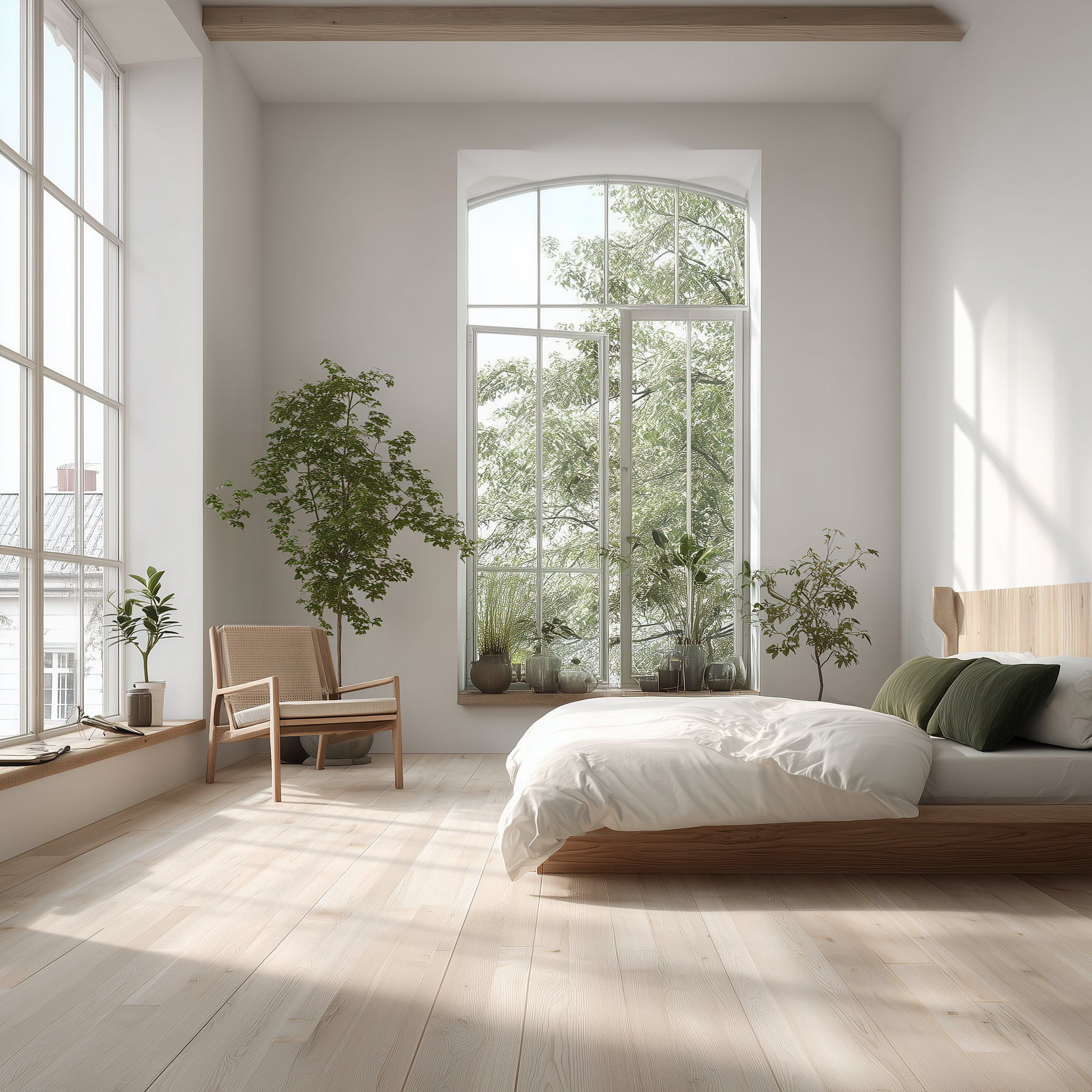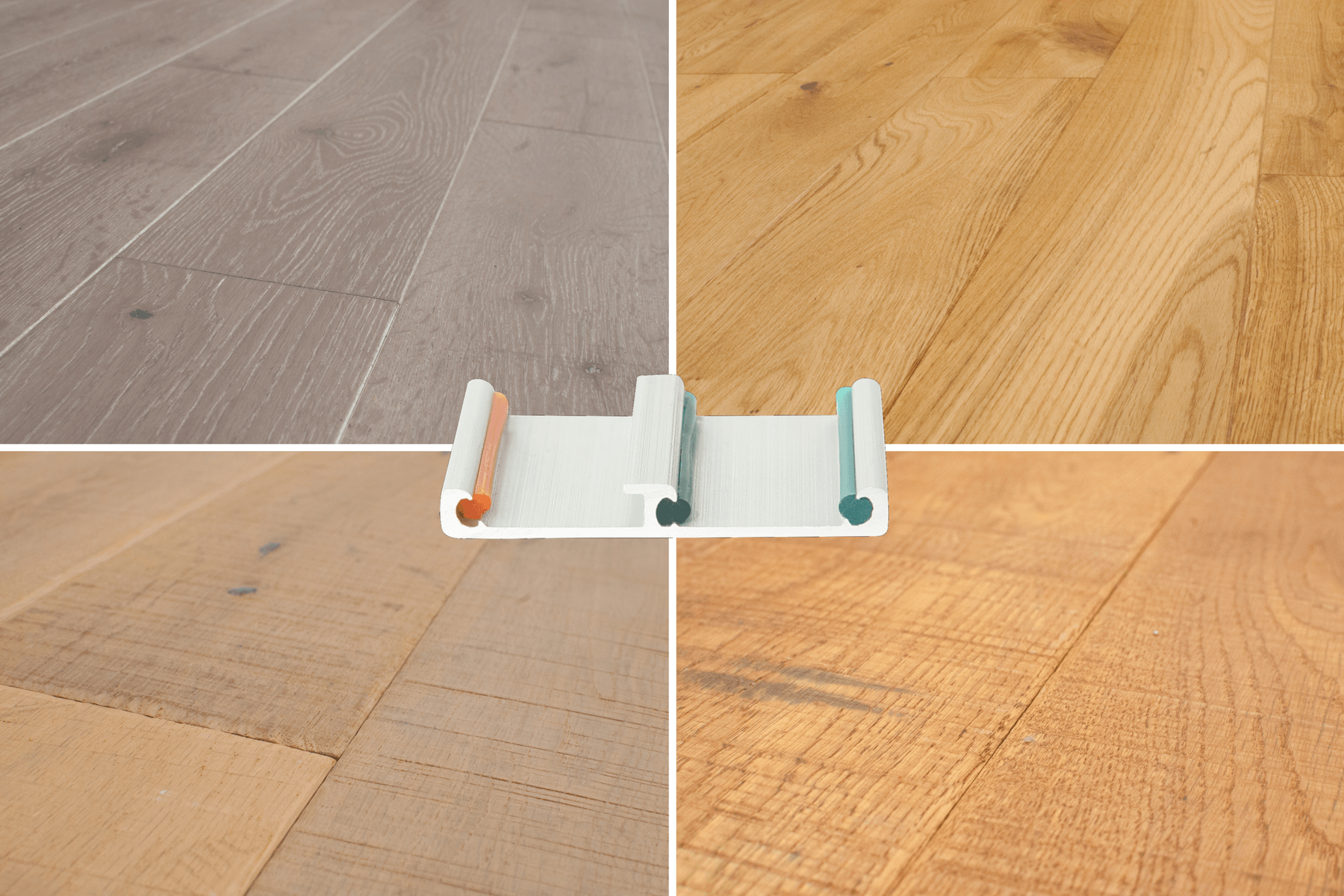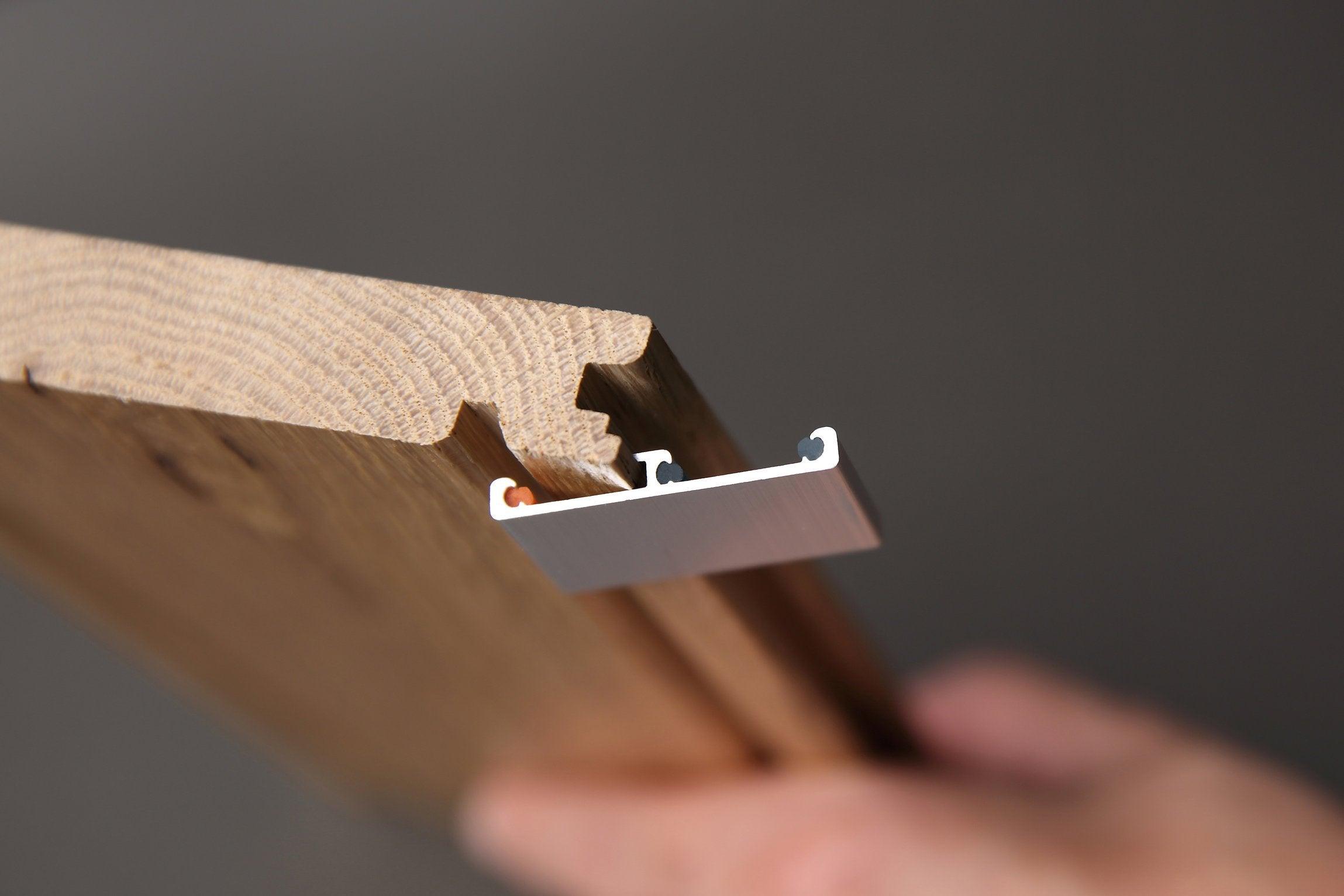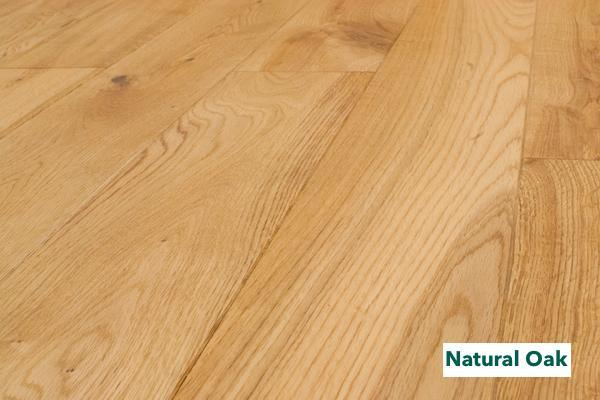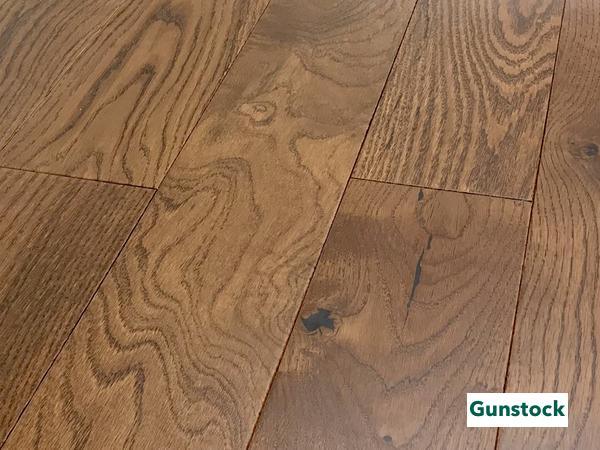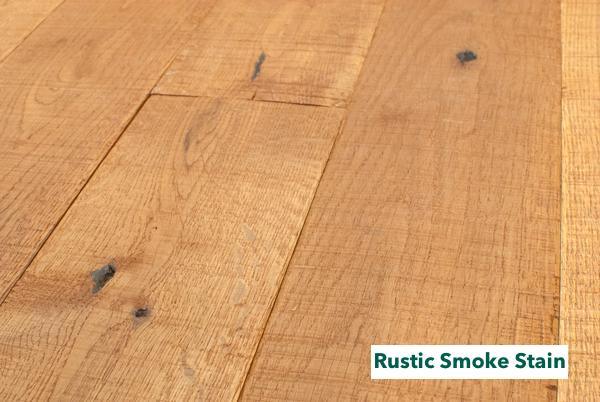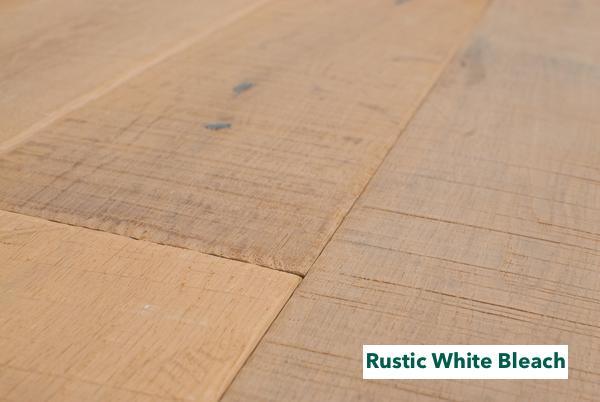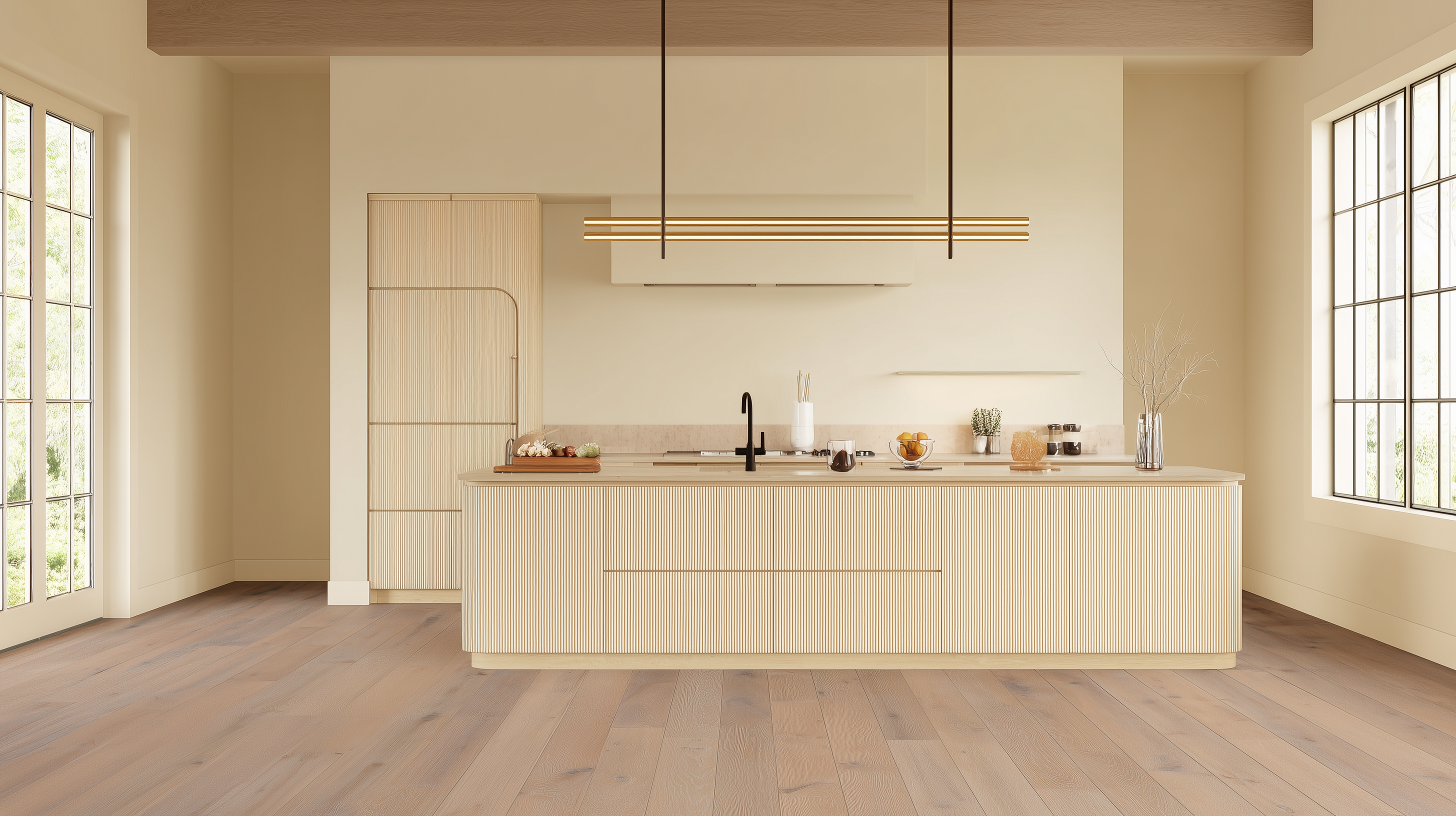Hardwood flooring is more than a surface—it sets the tone of your entire home. But when choosing materials, one big question always comes up: prefinished vs unfinished hardwood floors. Prefinished boards arrive ready to install with durable factory finishes, while unfinished planks offer endless customization on-site.
This guide explores the aesthetic, functional, and installation differences between the two — helping you decide which option suits your space, your schedule, and your lifestyle.
What Is Prefinished Hardwood?
When finishing a hardwood floor, there are two elements: the stain and the protective layer. However, a natural finish uses only a clear topcoat, typically polyurethane with aluminum oxide, to protect from scratches and enhance the wood’s natural color and grain. Both the stain and the topcoat contain chemical solvents. These chemicals contain volatile organic compounds (VOCs), which dissipate as they dry. It’s the smell you notice when opening a can of paint or mineral spirits.
The advantage of purchasing prefinished hardwood flooring vs unfinished is that all the staining, polyurethane, and fumes occur at the factory. When the boards arrive at your job site, the panels are dry and ready to install. Both types of flooring need to acclimate to the site, usually 3 to 7 days. After that period, installation for prefinished will be much faster.
Unfinished Hardwood: A Blank Canvas
When talking about unfinished hardwood flooring, we must consider two alternatives. The first is brand new boards that come straight from the factory. The new hardwood planks must be cut to size and then installed. Then they must be sanded after installation and finished on site.
The second is a preexisting wood floor that may be decades old. It must be sanded down to new wood in preparation for finishing. Either way, the wood floor is ready to stain and finish.
Why Homeowners Love Prefinished Flooring
Both options offer benefits, but the choice comes down to the final look you want to achieve, the amount of time available for installation, and the cost. Let’s look at the advantages of each option below.
Prefinished Hardwood Flooring Benefits
The greatest advantage of prefinished hardwood flooring is the factory did all the work. Here is what that means for you:
- Ready for Immediate Use - As soon as the last board is in place, you can bring the furniture back in and walk on the floor right away.
- No Fumes or VOCs - The factory uses UV light, fans, and ovens to help the coatings cure faster. Most of the fumes and VOCs dissipate before the flooring enters your home.
- No Dust - All of the sanding takes place at the factory. The only sawdust you’ll get is from trimming a few boards to fit, which you can do outside, in the garage, or basement. Your home stays cleaner.
- Quick Installation - There is no additional time needed for sanding, finishing, and drying. Once installed, the room is ready to use immediately. It’s the best choice for DIYers because there is no muss, no fuss.
- Beautiful and Durable Finish - A factory-applied finish looks gorgeous and is consistent across the entire floor. Factory finishes tend to be more durable due to the curing process that creates a hard acrylic finish with aluminum oxide. Most prefinished hardwood floors come with a warranty, making them a better investment.
- Lower Total Cost - Prefinished floors will cost more per square foot than unfinished. However, the additional labor and materials for finishing a floor can quickly exceed the cost of prefinished.
And the Cons…
Prefinished hardwood flooring is not always the perfect solution. Here’s why…
- Can Look Like Plastic - Many prefinished hardwood floors come with a high gloss that makes them look like laminate or plastic. The high reflectivity can show scratches more and conceal the wood grain below.
- Fewer Options – Although there are many options, some exotic hardwood species and wider planks may only be available in unfinished hardwood flooring.
- The Beveled Edge – Some people don’t like the look of the beveled edge and the V-shaped gap between boards.
Prefinished hardwood planks have a beveled edge to prevent damage. The finished floor will have seams along each row of boards. It’s not that noticeable, but if you want perfectly tight seams, you’ll need to go with an unfinished hardwood floor.
Unfinished Flooring Benefits
Unfinished hardwood flooring is a blank canvas for your room’s design. Between the species, board widths, and stain colors, your design options are almost unlimited. Consider these benefits of unfinished wood:
- Retains the Wood’s Character - Unfinished hardwood floors retain more of the wood’s natural color and grain pattern because prefinished hardwood flooring typically has more coats of finish. You can select
- satin or matte finish to show the wood’s natural grain and character.
- Contractors Prefer Unfinished - Many contractors work with unfinished hardwood floors to prevent accidental scratches and other damage during construction or extensive renovations. The reason is that they finish the floor last, removing any nicks and preventing further damage.
- More Options: Design possibilities are nearly endless for unfinished hardwood floors. You’ll find a variety of species and a rainbow of stain color options to match your design.
- Easier to Clean - Prefinished hardwood planks have a beveled edge to prevent edge damage during handling and shipping. When installed, it leaves a V-shaped groove between boards that can trap dust and dirt. Unfinished boards have square edges and tight seams.
- Smoother Floor - Because unfinished boards have straight 90°edges, the boards fit together tightly without noticeable seams. The finished floor is as smooth as a bowling alley.
Drawbacks to Consider: Time, Tools, and Texture
- Unusable Boards - Budget unfinished wood flooring often includes warped boards that can be a pain to install. You might have to throw some of them away, adding to the cost.
- Takes Days Longer - Any site-finished floor means the room will be off-limits for days. If pets and family walk on the floor accidentally, you'll need to start over.
- Unpleasant Fumes - Most finishes have fumes from petroleum distillates. Unless you select a low-VOC finish, these VOCs are toxic, driving you out of your home for days and lasting for weeks.
A Smarter, Easier Option for DIY Installers
The choice between prefinished vs unfinished hardwood floors depends on your priorities. Prefinished flooring offers speed, durability, and convenience—perfect for busy households and DIY installers.
Unfinished wood provides unmatched customization and a seamless look, ideal for heritage restorations or those seeking full design control.
For those seeking a high-end look with low-fuss installation, Easiklip’s floating solid hardwood offers a practical middle ground. With prefinished boards, five timeless styles, and no glue or nails, you get the luxury of hardwood without the long wait.
Ready to bring your flooring vision to life?
Explore Easiklip’s collection of eco-friendly, clip-in hardwood floors today at and get an instant quote tailored to your space.
